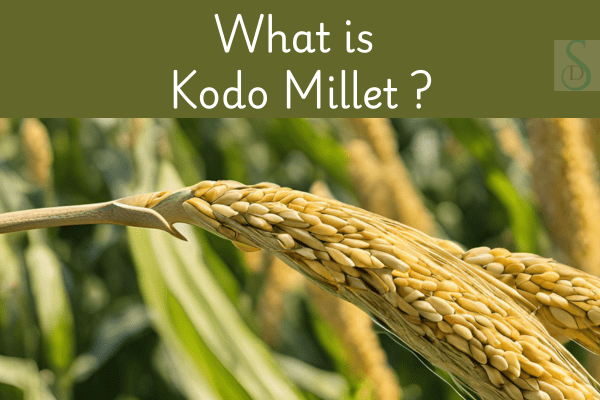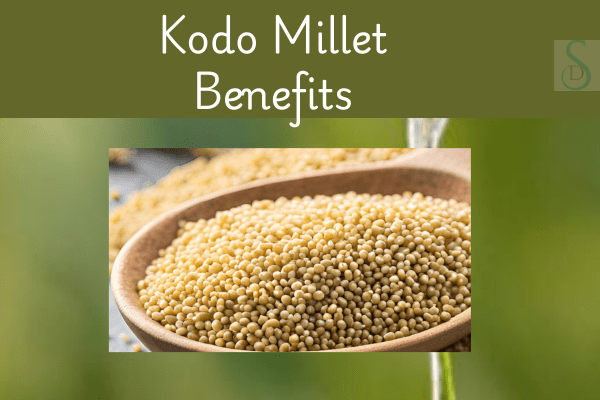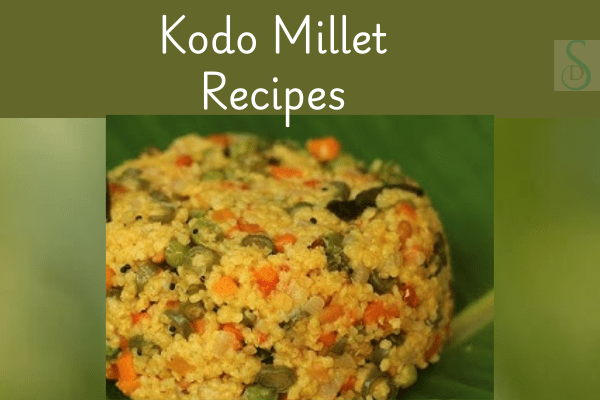Kodo Millet Benefits: In this article read the complete information about the miracle kodo millet.
Table of Contents
What is Kodo Millet?
Kodo millet is one of the best millet for diabetic patients.
It is also known as Himalayan millet. They are usually in a reddish pink color.
If we knew the magic of Kodo millet, we would not eat it at all. It is a good solution for diabetics to prevent diabetes in the future. Kodo millet has 9 percent fiber. It is a very best solution for blood-related issues.

Kodo millet scientific name
Kodo millet’s scientific name is “Paspalum scrobiculatum.”.
Kodo Millet nutritional value per 100g
Here is the nutritional value of Kodo Millet per 100 g:
| Nutrient | Value per 100g |
|---|---|
| Calories | 353 kcal |
| Protein | 8.3 g |
| Carbohydrates | 65.9 g |
| Dietary Fiber | 5.2 g |
| Fat | 3.6 g |
| Iron | 0.5 mg |
| Calcium | 35 mg |
| Magnesium | 49 mg |
| Phosphorus | 188 mg |
This is approximate data and may vary depending on the source.
Kodo millet common names
Here is a table of Kodo Millet common names in different Indian languages:
| Language | Common Name |
|---|---|
| Hindi | Kodra / Kodon |
| Telugu | Arikelu |
| Tamil | Varagu |
| Kannada | Harka |
| Malayalam | Koovaragu |
| Marathi | Kodra |
| Gujarati | Kodri |
| Bengali | Kodo |
| Odia | Kodua |
| Punjabi | Kodon |
These names are commonly used in local markets and communities.
Kodo Millets Health Benefits

Here are the top 5 health benefits of Kodo Millet.
1.Promotes Immunity
Kodo millet will reduce all blood-related issues. Generally, we know that immunity problems come from blood, and auto-immune diseases also come from blood. The allergic reaction effect will gradually reduce.
2. Weight Loss
The high fiber content in Kodo millet will make your stomach full for a long time. Compared to rice, it has few carbs. Hence, it is a better choice for weight control.
3. Heart Health
Kodo millet is rich in antioxidants, magnesium, and fiber. It helps to decrease cholesterol and improves blood circulation. Hence, the risk of heart disease is reduced.
4.Diabetes
Kodo millet has a low glycemic index. So, glucose is slowly released into the blood. Gradually, blood sugar levels are regulated. Hence, it is beneficial for diabetic patients.
5. Bone marrow
Kodo millet has good quantities of calcium, phosphorus, and magnesium. These nutrients improve the production of red and white blood cells in the bone marrow. So, they strengthen bones. It supports healthy bone density and growth.
Kodo millet side effects
Some people may get dizzy and vomiting. Avoid eating large quantities like rice. It has good fiber content. So eating more will make your stomach full. Also, don’t recommend it for thyroid patients. Few people will get skin problems.
Kodo Millet Recipes: How to cook Kodo Millet?

1. Kodo Millet Upma
Ingredients:
- 1 cup Kodo Millet (washed and drained)
- 1 tbsp ghee or oil
- 1 tsp mustard seeds
- 1 tsp. cumin seeds
- 1-2 green chilies, slit
- 1-inch piece of ginger, grated
- 1 medium-sized onion, finely chopped
- 1/4 cup carrots, finely chopped
- 1/4 cup peas (optional)
- Salt to taste
- 2 cups water
- Fresh coriander leaves (for garnish)
- Lemon juice (optional)
Method:
- Heat one table spoon of ghee or oil in a pan. Add mustard seeds and cumin seeds. After they splutter, add the green chilies and grated ginger. mix for a few seconds.
- Add the chopped onion and cook until they become golden yellow.
- Add the vegetables, like carrots and peas. Cook for a few minutes.
- Add the drained Kodo millet and mix well. Cook for about 1 to 2 minutes.
- Put some water and add salt to taste. Boil for 10 min.
- After absorbing water, decrease the flame and keep it for 2 minutes.
- If you like, add curry leaves and lemon juice.
- Serve as breakfast or snack.
Kodo Millet Khichdi
Ingredients:
- 1 cup Kodo Millet (washed and drained)
- 1/4 cup yellow moong dal (split yellow lentils)
- 1 tbsp ghee or oil
- 1 tsp cumin seeds
- 1/2 tsp mustard seeds (optional)
- 1/2 tsp turmeric powder
- 1-2 green chilies, slit (optional)
- 1-inch ginger, grated
- 1 medium-sized onion, chopped
- 1/2 cup mixed vegetables (carrots, peas, beans, etc.)
- Salt to taste
- 3 cups water
- Fresh coriander leaves (for garnish)
Method:
- Roast the Kodo Millet and Moong Dal.
- Take a pressure cooker and put some ghee.
- After heating ghee, add cumin seeds and mustard seeds. Once they splutter, add the ginger pieces and green chilies. Mix until they fry.
- Add the few chopped onions and cook for 2 to 3 minutes. Then, add the vegetables: carrots, capsicum, and tomatoes.
- Add the roasted Kodo millet and moong dal. Add very little turmeric powder and salt. Mix well.
- Put in 3 cups of water and boil. cook like rice until water is gone.
- Then Khichdi is ready. Serve hotly.
Frequently Asked Questions
1. What are the health benefits of Kodo Millet?
Kodo millet is mostly useful for diabetic patients. It cleans our stomachs. Improves heart health. Like all millets, It is also rich in fiber, protein, and essential minerals.
2. Is Kodo Millet good for weight loss?
Yes definitely. Kodo millet has very few calories. It has more fiber. So they support weight loss by reducing hunger.
3. How to cook Kodo Millet easily?
First, wash the millet and soak it for 3 to 4 hours. Then cook it like rice.
4. Can Kodo Millet be eaten daily?
Yes. It is safe to eat daily. It provides the required nutrients to our body.
5. What is the nutritional value of Kodo Millet?
Kodo millet contains around 353 kcal, 8.3 g protein, 65.9 g carbohydrates, and 5.2 g fiber per 100 g. It is also rich in minerals like calcium and phosphorus.
